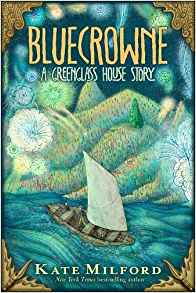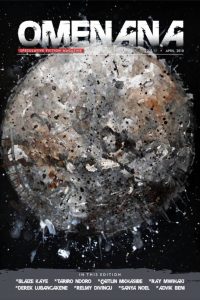Maya C. James Reviews Hunting by Stars by Cherie Dimaline
 Hunting by Stars, Cherie Dimaline (Amulet Books 9781419753473, $15.99, 400pp, hc) October 2021.
Hunting by Stars, Cherie Dimaline (Amulet Books 9781419753473, $15.99, 400pp, hc) October 2021.
Part horror, part dystopia, Cherie Dimaline draws on a long history of state-sponsored genocide to create the main plotline of Hunting by Stars, second in the Marrow Thieves series, in which large swaths of the Canadian population have lost the ability to dream due to a mysterious disease. The Canadian government is hunting First Nations and indigenous people, believing that the secret to dreaming lies in their bone marrow. After building (and rebuilding) residential ‘‘schools’’ (prisons/extraction facilities) they take the marrow from dreamers and supply them to those afflicted by the disease. Most of those who supply the marrow wind up dead or separated from their families and forced to abandon their languages.
Hunting by Stars follows the main group of dreamers from first book, The Marrow Thieves: Bullet, Chi-Boy, Derrick, French, Miig, Zheegwon and Tree, Wab, and Rose. This multi-perspective novel focuses specifically on 17-year-old French, who has been kidnapped by a group of marrow extractors – otherwise known as Recruiters. Knowing his death is nearing if he doesn’t conform to the school’s expectations, French relies on his dreams and the hope that his chosen family will come to rescue him without falling prey to Recruiters. His survival depends on his willingness to succumb to his captors and slowly give up more of himself. The compelling question in his narrative is how much he is willing to give to avoid bone extraction, and who he is willing to destroy to gain his freedom. The answers offered here are imperfect and filled with turmoil.
Hunting by Stars is a story about colonialism, vigilantism, climate change, and human nature. Dimaline tackles the harmful legacy of residential and boarding schools mostly within the Canadian context. One need not be Canadian to understand this historical context, however. It’s clear these institutions are at their core wrong, with no hope for redemption. The only answer to their evil is destruction. While the characters are not yet powerful enough to destroy these institutions, their resistance to them is admirable. Storytelling and remembrance become the primary forms of passing time, between dodging dangerous lightning storms and drinking cedar tea.
Chosen family is always a fascinating theme, particularly in a dystopian North America. While the characters in Hunting by Stars come from different tribes and clans, they relate to one another in a way that is both authentic and interesting. A shared connection to the climate change-ravaged Earth, memory of ancestral knowledge, and hope for the future is the key to the character’s survival. It is evident that Dimaline actually spoke with kids of this age to develop realistic scenes, as well. The characters sound and act like their age, flaws, hormones, and all. I enjoyed the ‘‘coming-to’’ stories many of the protagonists told between intensely violent scenes. My favorite probably being Chi Boy’s coming-to story for its brevity and powerful messaging surrounding survival and cruelty, and Rose’s story of the Jingle Dress dancers in the epilogue. Here, Dimaline’s ability to write stunning, gut-wrenching prose about remembrance and hope shines through brightest. The large cast in Hunting by Stars does occasionally make the book difficult to get into, though never to the point where the story becomes confusing.
Rose and Derrick’s adventures to find French are the most compelling action-wise. Additional dangers come to the forefront, including a blood cult led by a man named the Chief. Here, in a dilapidated hut in the woods, he takes advantage of non-indigenous women who are unwilling to steal marrow from indigenous people, but unable to find a different way of living. Unsurprisingly, they’re still just as bad as marrow-harvesters. Rose’s back and forth with the Chief was a testament to her character; unwilling to be swayed by the words of an older, predatory man that wishes to mold her into an obedient young girl.
Hiding the Stars is for young adults but contains some detailed and terrifying violence that is brutally explicit. Small dehumanizing details like naming dreamers ‘‘cargo’’ and ‘‘runners’’ as opposed to people, and seeing them as walking, expendable medicine, or experiments to carve up and make sense of convey the weight of the widespread atrocities.
It was unclear to me how the lack of dreams was the worst impact of the disease that ravaged the world – while it makes sense that there were profound psychological impacts, I would have liked to understand how that worked more deeply and to have a clearer picture of how Frenchie was kidnapped in the beginning of the novel.
Hunting by Stars is not just a captivating read, but a justice-oriented read that points to a disturbing historical trend of seeing First Nations and indigenous communities as both expendable and magical. Dimaline’s ability to capture and counter this hate through sharp dialogue and realistic characters made this quite a powerful read.
This review and more like it in the January 2022 issue of Locus.
 While you are here, please take a moment to support Locus with a one-time or recurring donation. We rely on reader donations to keep the magazine and site going, and would like to keep the site paywall free, but WE NEED YOUR FINANCIAL SUPPORT to continue quality coverage of the science fiction and fantasy field.
While you are here, please take a moment to support Locus with a one-time or recurring donation. We rely on reader donations to keep the magazine and site going, and would like to keep the site paywall free, but WE NEED YOUR FINANCIAL SUPPORT to continue quality coverage of the science fiction and fantasy field.
©Locus Magazine. Copyrighted material may not be republished without permission of LSFF.







